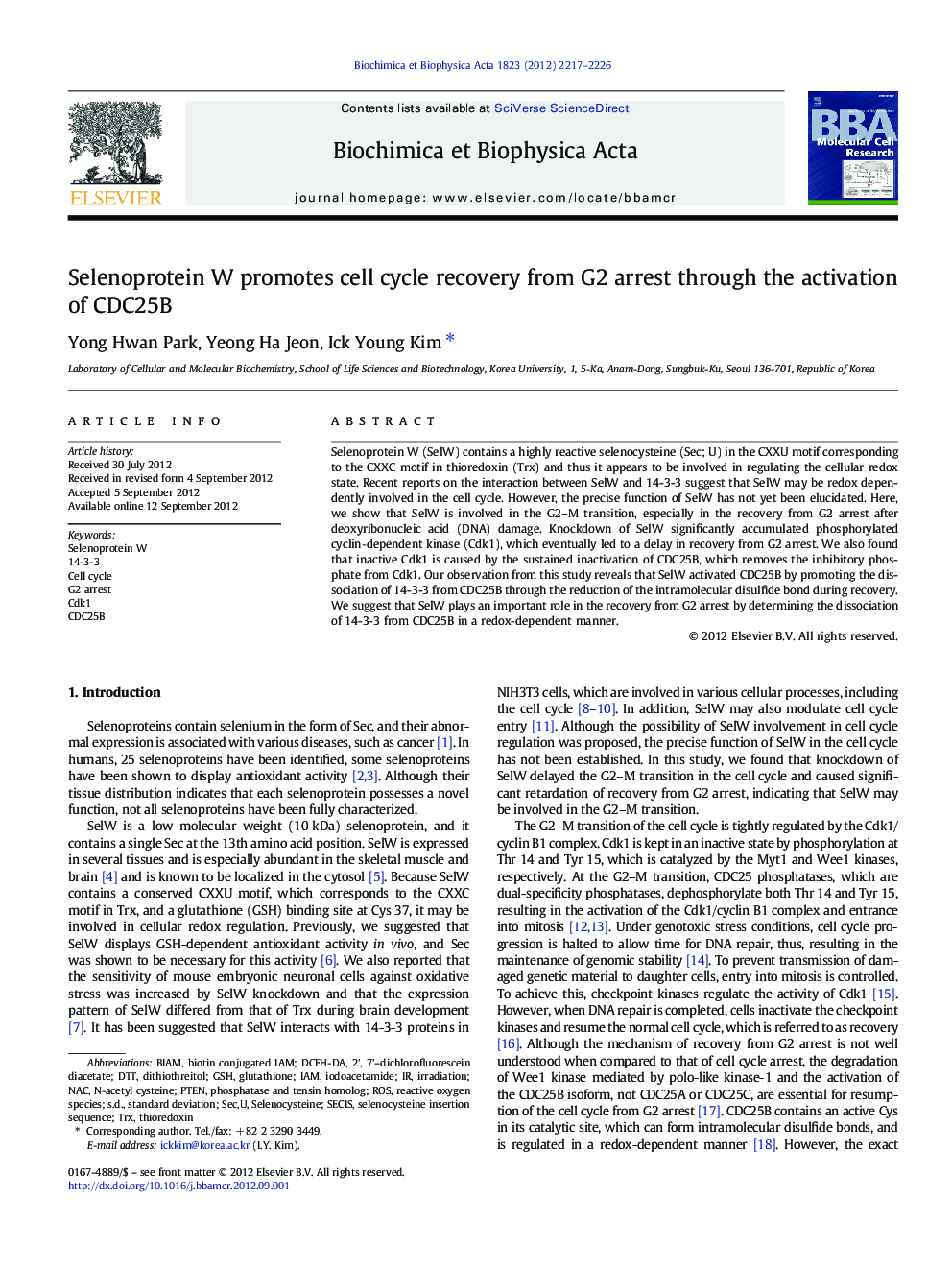| Article ID | Journal | Published Year | Pages | File Type |
|---|---|---|---|---|
| 1950667 | Biochimica et Biophysica Acta (BBA) - Molecular Cell Research | 2012 | 10 Pages |
Selenoprotein W (SelW) contains a highly reactive selenocysteine (Sec; U) in the CXXU motif corresponding to the CXXC motif in thioredoxin (Trx) and thus it appears to be involved in regulating the cellular redox state. Recent reports on the interaction between SelW and 14-3-3 suggest that SelW may be redox dependently involved in the cell cycle. However, the precise function of SelW has not yet been elucidated. Here, we show that SelW is involved in the G2–M transition, especially in the recovery from G2 arrest after deoxyribonucleic acid (DNA) damage. Knockdown of SelW significantly accumulated phosphorylated cyclin‐dependent kinase (Cdk1), which eventually led to a delay in recovery from G2 arrest. We also found that inactive Cdk1 is caused by the sustained inactivation of CDC25B, which removes the inhibitory phosphate from Cdk1. Our observation from this study reveals that SelW activated CDC25B by promoting the dissociation of 14-3-3 from CDC25B through the reduction of the intramolecular disulfide bond during recovery. We suggest that SelW plays an important role in the recovery from G2 arrest by determining the dissociation of 14-3-3 from CDC25B in a redox-dependent manner.
► SelW is involved in recovery from G2 arrest induced by DNA damage. ► SelW promotes the dissociation of 14-3-3 from CDC25B. ► SelW reduces the intramolecular disulfide bond of CDC25B. ► Sensitivity to anticancer drugs is increased in SelW knockdown cells.
